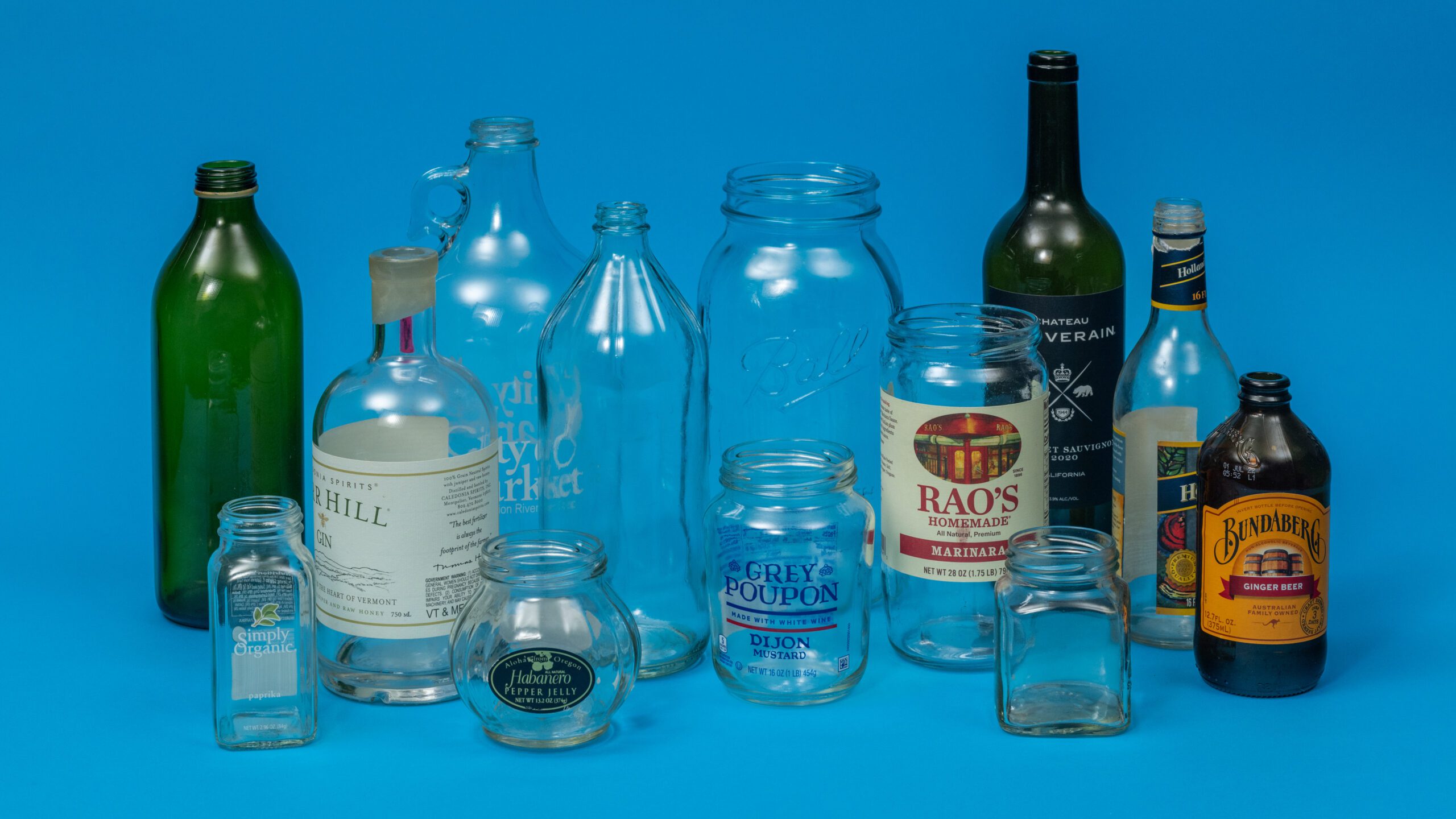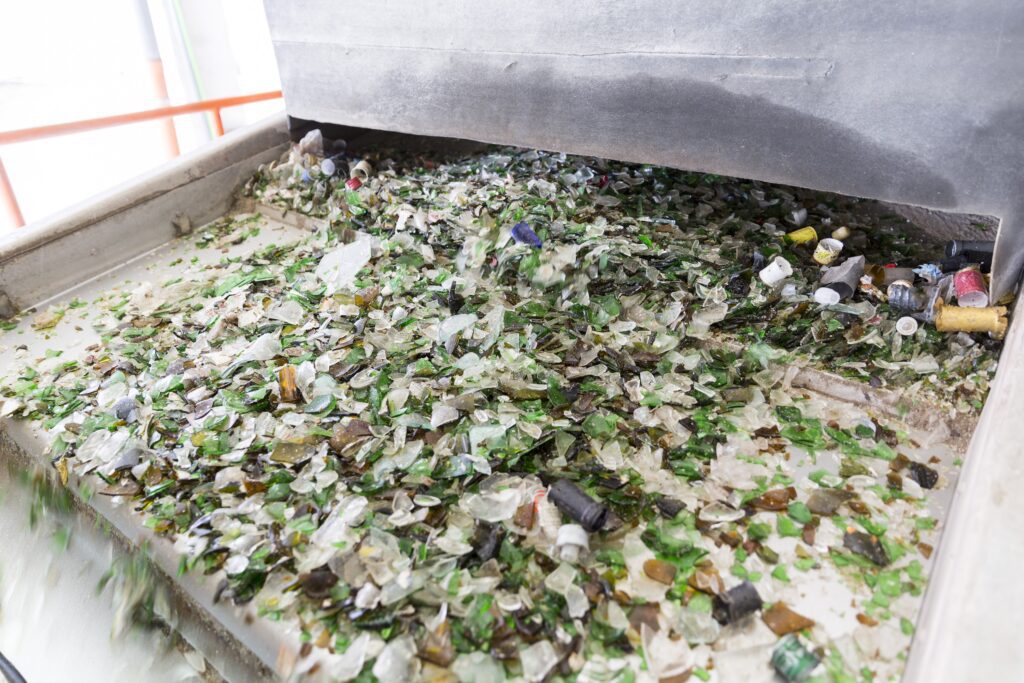All CSWD Drop-Off Centers, the Organics Recycling Facility, and the Environmental Depot will be closing at noon on Wed. 11/27 and closed on Thurs. 11/28 for the Thanksgiving holiday.
Keep Calm and Recycle On: Part 2, The Rocky Road of Glass Recycling

The second in a series on recycling in Vermont.
The first step: Broken glass bottles and jars at a typical MRF on their way to further sorting and crushing.

Welcome to the second installment in our series on how recycling–specifically, “blue-bin” recycling—really does work in Chittenden County and Vermont.
Today we’re tackling a REALLY old favorite: Glass! More specifically, glass containers– jars and bottles only, since that’s the only glass accepted in blue-bin recycling.
Since Vermont leads the nation in breweries per capita, for this illustration, we’ll use a glass beer bottle. (Substitute the word “soda” if you prefer. The process is identical.)
If you’re into growlers, you already know that goes back to the brewery for a refill—Props for reuse!
Here’s how that beer bottle spends its life in Vermont and beyond after you’ve bought it, drained it, and placed it in your blue bin:
Step 1.
Your trash and recycling hauling company picks up your recyclables or you bring them to a CSWD Drop-Off Center, and they go to CSWD’s Materials Recovery Facility—commonly called the MRF (rhymes with smurf)—in Williston.
Step 2.
At the MRF, the glass bottles and jars are smashed at the beginning of the sorting process by spinning metal discs. These discs are spaced two inches apart. Anything smaller than two inches—corks, loose bottle caps, pill bottles, etc.–drops through these spaces and ends up as trash mixed with the glass.
The broken glass travels past vacuums, magnets and a whole series of carefully designed machines that shake, rattle and roll that whole messy mix. The goal? Separate glass from all that trash.
This cleaned-up glass goes through a special smasher that breaks the shards down to tiny, sand-like particles. We call this Processed Glass Aggregate (PGA).
Step 3.
CSWD pays about $5.00 per ton to send the PGA to a quarry in Colchester, VT, where it’s blended with quarry stone and sold for use as a subbase in local construction projects.
Reduce & Reuse Before you Recycle!
Even though recycling conserves resources when compared with making items from new or non-recycled materials, it clearly isn’t free. Every step in any recyclable’s life involves labor, transportation, and energy costs.
That’s why reducing our consumption—get off those junk mail lists! Get a reusable coffee mug!— will always beat recycling when it comes to the overall environmental impact and sustainability of our choices.
There’s so much more to tell, we can’t wait to share it with you in our next installment. What do YOU want us to break down next?
Send your questions to info@cswd.net, and if you want to see it all happening up close and in-person, come on a tour!
Find out more about all our tours and workshops on our Programs & Learning Opportunities page.
Folks who’ve been on our fabulous MRF tour over the years are always surprised to learn that glass bottles and jars put in your blue bins do not become new bottles and jars.
This is true all over the Northeast (and many other parts of the United States).
Bottles can only be made from recycled glass if the colors are separated, which is very difficult to do once it has gone through a MRF. There are “clean-up” facilities that can separate the glass by color, but they are few and far between; the closest one is 80 miles away in Canada. The financial and environmental costs of hauling such heavy material long distances are significant.
Bottles that go to a redemption center or reverse vending machine for the nickel refund through Vermont’s Bottle Bill go through an entirely different system that doesn’t include a MRF. These bottles have a slightly better chance of becoming new bottles but travel many miles to do so.
The bottom line is that no matter which system you use to recycle your glass bottles and jars, they are unlikely to end up as new glass containers.
CSWD has invested more than a million dollars in equipment devoted to ensuring that our community’s glass bottles and jars stay close to home and out of the landfill. All signs are pointing to more and better options in the future—we’ll be sure to share them as they come online.
Stay tuned, and let us know what you’d like to see us tackle next!
